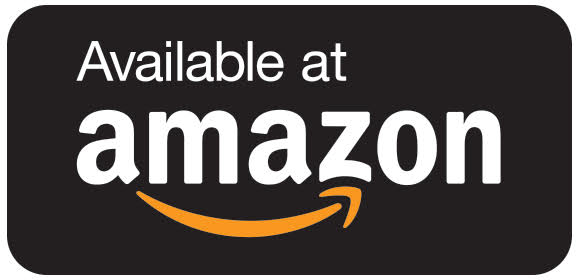Phonak have announced the introduction of a new range of hearing devices that they are calling Marvel. The early information available about the devices and their features is that they are just that, a marvel. Let’s talk about the new Phonak Audeo Marvel. Firstly and probably most importantly, they sound good, performance in noise appears to be pretty good as does overall sound quality. Streaming audio is excellent; it is full with good bass mid and treble. The devices offer direct stereo streaming of audio from any Bluetooth enabled audio device and stereo truly hands-free telephone calls with any Bluetooth enabled mobile phone. And of course, there is more, I was lucky enough to speak to Martin Grieder who is Group Vice President of Hearing Instruments Marketing at Sonova and an old Friend, Jason Mayer who is Vice President of Commercial Sales in Phonak US.
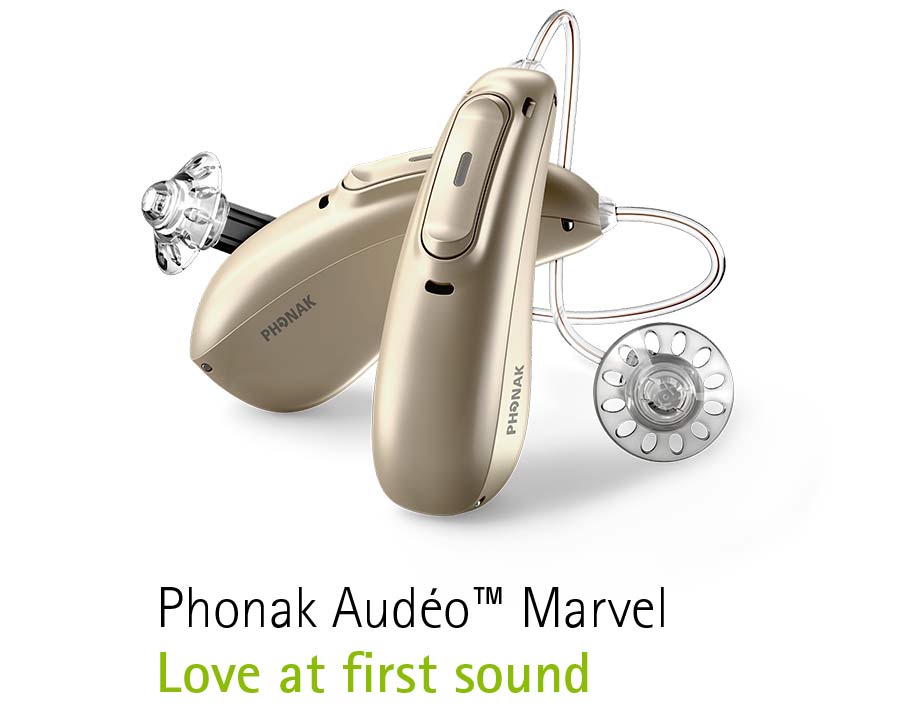
Under Pressure For MFI
Phonak has been under pressure for the last few years because they are one of the few mainstream hearing aid brands without a Made-For-iPhone product. The introduction of the Audeo B-direct was pretty impressive, and while it connected to iPhones it still wasn't a Made For iPhone product within the traditional concept. Phonak called it Made For Any Phone as it solved the dilemma of connecting to non-Apple phones which was pretty attractive for many.
A Unique Proposition
Phonak had decided to go a different way with their connectivity, one that would give them a direct connection to any mobile phone. They used the traditional Bluetooth protocol, which offered huge benefits, but also real technical problems. Unfortunately, that direction came with a price, no stereo audio streaming of phone calls or any other audio. It also ensured that Phonak's quite famous ear to ear features did not work. For many, that was a compromise too far.
I spoke to an engineer at the time, and we discussed why Phonak had used one Bluetooth protocol with the B-direct that didn’t offer audio streaming, our consensus was power drain was the real issue. So, with the launch of a new product coming, I honestly expected to see a leap forward for Phonak in audio streaming but I was still convinced they would probably go down the route of traditional Made-For-iPhone (MFi). However, I was wrong, and I am delighted I was.
I put it to the two gentlemen that while Audeo B-Direct had been an interesting step forward, that it hadn't satisfied the market really because it wasn't essentially a fully featured Phonak hearing aid. I asked was the power drain and management a factor in that decision.
New Power Management
Martin replied that indeed the underlying issue for them was the power management and that is why they used the Bluetooth protocol that they had with the B-Direct. I said that I had been surprised that they didn't use the full protocol and I had guessed that battery drain was an issue. Martin explained that they had designed a completely new power management system which allowed them to use the classic Bluetooth protocol to its full effect.
This really was the core of the new devices and their feature set. The new power management system will ensure that users will experience more or less normal battery usage even when streaming audio. While the lads were able to give me the stats on the Rechargeable option, they were unsure about the zinc-air figures. I will follow up with them at a later date.
I had a further discussion with Oliver Frank he explained more about the decisions that were made relating to the B-Direct. He said "That power consumption played very little part in their decisions. To deliver without compromise there were the following challenges:
- BT is a peer to peer protocol. To enable two ears requires a proprietary extension to the standard BT protocol. This is difficult, complex and took a bit longer than Fall 2017
- Music streaming (A2DP) was the two protocols that we put on lower priority based on our consumer research. Phone call and TV are by far the more important use cases for our target group. This does in no way mean music is not important and we would have liked to launch in in Fall 2017
- BVST (Binaural Voice Stream Technology) – full audio streaming between two ears - was thought to be impossible for a hearing aid form factor by many engineers in- and outside the industry and was one of the biggest challenges. It requires a proprietary protocol and best radiosensitivity"
He also discussed the expected battery life of the hearing aids:
"The following battery lifetime is defined as 16 hours usage per day and consists of
· 8 hours AutoSense OS 3.0 and Binaural VoiceStream Technology
· 4 hours Bluetooth streaming, phone call (HFP) and media (A2DP)
· 4 hours of TV usage with TV Connector (AirStream Technology)"
| Hearing aid | Audéo M-R | Audéo M-312/T | Audéo M-13T |
| Battery life time | 1 day / >16 hours | 60 hours | 100 hours |
As you can see from the table, you will get a lot of streaming and still have a full days's use from the rechargeable. The M-312/T will provide just under 4 days of use, however, and in fairness, that is with a lot of streaming. The M-13T will deliver closer to 7 days of use even with all of that streaming. It will be interesting to see how these figures correlate with user experience. I would imagine, most people with a 312 will get four to five days of battery life. That is pretty standard with competing MFI hearing aids.
More Than Just Audio Connection
Martin explained that the Bluetooth connection was being used for more than just audio streaming. It is also now being leveraged for data exchange between the mobile phone and the hearing aids. It is this ability that ensures a much wider use case is available to consumers and professionals. The data exchange capability is the core of the new ability to remote fine tune the hearing aids in real time and for the Patient to give day to day feedback with the new Hearing Diary.
Remote Fine Tuning
I asked the gentlemen if they felt that consumers were ready for remote fine tuning and if they believed that there would be much uptake by consumers and professionals. Martin replied that certainly in their research consumers were interested in having this type of ability. While not every user may be interested, there will be a growing number who will come to expect it. As for the professional adoption, like consumers, there would be some who will be early adopters and the practice will probably grow from there.
No Real Loss of Face to Face
I said that I felt that the system did not deliver a sense of losing in-person or face to face time. That in fact, the video calling system gave the same sense of interaction, just through a different medium. Martin agreed that they had designed the remote ability with that in mind, they wanted to ensure that there was still the same sense of engagement between the professional and the consumer and they believed that they had delivered that well.
More Control, More Involvement
I further asked about the new app ecosystem that had been built around the new product and asked for their thoughts and reasoning for the concepts. Martin replied that more and more consumers wanted both control over and involvement in their hearing care. The new apps were designed to help customers become more engaged and involved in the process. Again, they felt that these apps would only further cement the relationship between the consumer and the professional.
Speech To Text
I asked about the text to speech app they had released with the new product, I found it fascinating and a really intelligent use case. Martin said that Phonak saw their job as aiding communication and they knew that even with audio streaming, some people still had some problems understanding what was being said on the phone. The new app acted as a transcription system which allows users to read what is being said on the other end of the phone. Thanks to hands-free phone calling you can hear and at the same time read the conversation. They believed that the app would give people with hearing loss that extra help to understand people on the phone, especially, people whos voice they may not have been familiar with.
Love at first Sound?
I asked about the change that has been mentioned in the first fit of the new Marvel. They said that they had gathered a lot of data in relation to customer preference for the first fit of their hearing aids. They had anonymous preference data from thousands of customers which all pointed towards one conclusion, that the existing first fit protocol wasn't quite right for new customers. The decision was taken to change the first fit prescription to be more in line with what consumers were actually looking for. Hence, Love at First Sound for new users.
RogerDirect Coming
I asked the gentlemen about RogerDirect, I understand that it is coming in 2019, but when it does, will it simply be a backward compatible software upgrade to existing hearing aids? Martin said that the hearing aids can be upgraded in Fall 2019 by hearing care professionals so that RogerDirect™ can be installed which allows the Roger microphones to stream directly to Marvel hearing aids without having to attach an external receiver.
A Very Strong Offering
I would like to thank Martin Grieder and Jason Mayer again for giving me their time. I think that the Marvel is a very strong offering from Phonak, I listened to the audio streaming feature and I was pretty impressed with the quality. I didn't actually get to test the hearing aids, I just listened to audio samples. So it will be interesting to see feedback from users when they actually do hit the market. Let's take a deeper look at what we Know about the Phonak Marvel
What Do We Know About Phonak Marvel?
This is the initial offering on the new Marvel platform, as is common with Phonak the Audeo (their Receiver In Canal devices) is the first to be introduced. The Marvel Audeo family will be made up of five hearing aids of which two will be rechargeable. There will be no size 10 Audeo on the Marvel family, the smallest traditional battery size will be the 312. The rechargeable offerings are interesting, Phonak have decided to offer a smaller rechargeable device and slightly larger one that will offer a telecoil as well. That makes a lot of sense as Loop systems only seem to be becoming more and more popular.
Rocker Switch, Not Push Button
Phonak have also changed the push button on the devices, they now offer a rocker switch instead for more functionality.
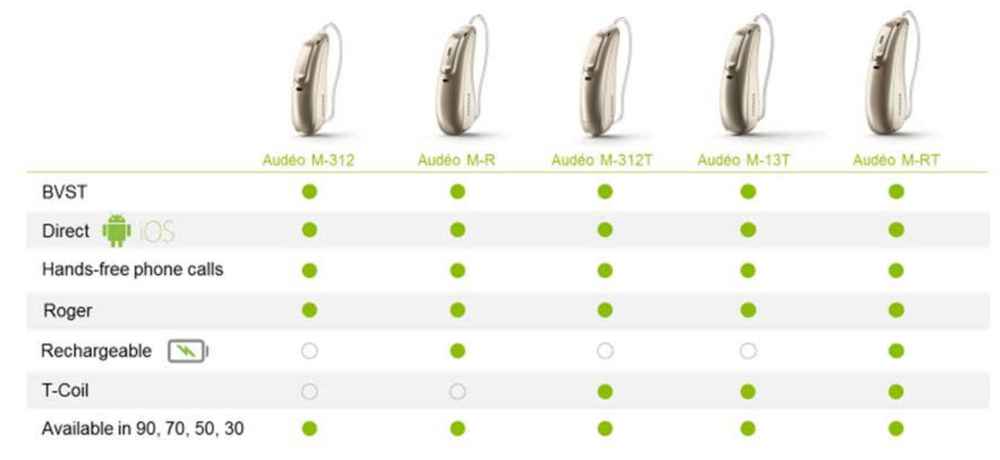
Multi-functional and Feature Rich Hearing Aids
This hearing device is a hugely multi-functional and feature-rich hearing aid. The Marvel contains probably every single one of the current headline features in the hearing aid world, and they have even thrown in some new ones, here’s the quick list:
- Stereo Bluetooth streaming: Stereo streaming from any Bluetooth enabled device, that means iPhone, iPad, laptops, computers, Macs, Android phones, Windows phones, hell any Bluetooth-enabled phone.
- Real Hands-free calling in stereo: Like the Audeo B-direct, the Marvel offers true hands-free calling from Bluetooth-enabled phones and VOIP services like Skype, except, to both hearing aids.
- TV Streaming: Marvel can stream directly from Bluetooth-enabled TVs, and can also stream from the Phonak TV Connector accessory.
- Rechargeability: They say both Marvel rechargeables will deliver a full day of hearing aid use from a single charge.
- Remote adjustments: Marvel hearing aids can be adjusted remotely by your hearing expert.
- New App Eco-System: Brand new apps to make life easier and engage the consumer in the process.
- RogerDirect: This is really fascinating, for the first time, users will be able to stream from Roger devices directly to their hearing aids.
- Full Phonak Feature Set: Unlike the Audeo B-direct, the Marvel devices will not be hobbled, they will offer full and up to date inter-ear features.
Stereo Bluetooth streaming
As I said, unlike the Phonak Audéo B-Direct, Marvel will stream stereo audio from any device capable of streaming audio via Bluetooth. This pretty much includes any device you can think of. Want to connect it to your Android phone? Go ahead. Want to connect it to your Mac Book or Windows laptop? Yup, no worries. That is pretty impressive stuff.
The quality of streaming audio appears to be excellent, the bass is full and warm and treble gives that zing you would expect. The Audeo B-Direct was a deal breaker for me because of the lack of audio streaming, Phonak have made up for that in a big way with the Marvel.
True Hands-Free Calling
As with the Audeo B-Direct, the Marvel offers true hands-free calling, however, it does so in stereo. So you will hear your phone calls in both ears giving you a better chance at understanding what is being said. Again, because it is true hands-free, you don't need to hold your phone, in fact, your phone could be anything up to thirty feet away. You simply hit the button on your hearing aid to answer the call.
Versatile TV Streaming
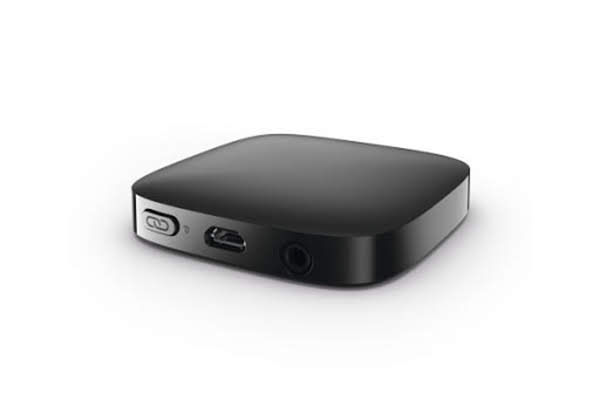
While the Marvel hearing aids will connect to the Phonak TV Streamer, they will, in fact, connect directly to any Bluetooth enabled television. You simply need to set up the connection within your TV menu and the TV audio will stream directly to your hearing aids.
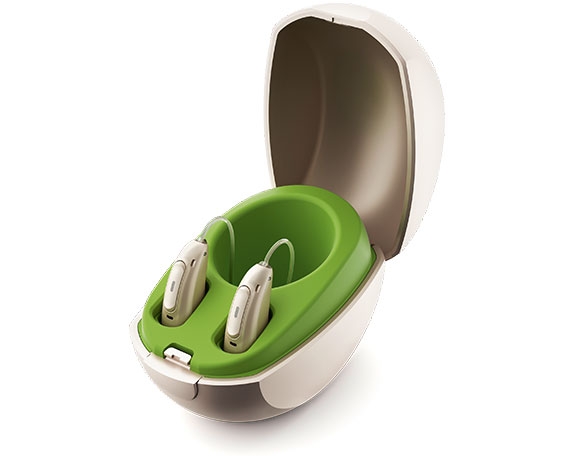
Rechargeable Option
The Marvel comes with two Lithium-Ion rechargeable hearing aid options. One device is smaller while the larger device offers a telecoil. Phonak say that the power cell will deliver up to sixteen hours use with four hours of audio streaming on one charge. That means even if you use the audio streaming function you should get a full days use out of the devices.
For me, the rechargeable option would be the device I would go for. Even with the new power management system, I would imagine the Bluetooth connection is pretty power hungry. With the rechargeable option, you never have to worry about battery drain. As I said, when I have full figures for the battery time on the zinc-air models I will update the article.
Remote Adjustment
This is the first ever Phonak hearing aid outside of the VA in the US which offers remote fine tuning to consumers. Phonak have been very intelligent with how they offer the system, it is a live system which means changes to the hearing aids are made in real time. The remote fine-tuning is undertaken during a video call which is begun from the professionals fitting software. It works really well and the video call offers face to face engagement with the professional. I saw this feature at work and I was very impressed with the functionality and experience.
New Apps
To facilitate the remote fine tuning Phonak have delivered a new app called the myPhonak App which allows you to access a hearing diary and the remote support feature. The hearing diary is to give feedback about your day to day experiences with the hearing aids and is a large part of the co-operation concept that Phonak has brought with these hearing aids.
The remote support feature is a fantastic option that will allow real-time fine-tuning of your hearing aids. This opens up real opportunities for fine-tuning of the hearing aids live in the situations you are having difficulty in. I think this will be a very popular feature moving forward and I believe more and more consumers will begin to look for this service as a matter of course.
Speech To Text App
The Phonak myCall-to-Text app allows you to read, in real time, what the person on the other end of the phone says. I mean this is a fantastic feature, what is even better, you can download this app and use it without wearing Phonak Hearing aids. I mean how cool is that. The app just works, it is pretty amazing to see it in action. The app writes out what the person on the other end of the phone says, in real time. It should allow you to communicate with anyone, anytime, anywhere without worrying about missing out on the conversation.
RogerDirect
Roger is an FM system from Phonak which offers direct streaming from accessory devices like microphones. The devices are viewed as the gold standard by many, however, because they only work with Roger receivers which need to be attached to your hearing aids, there hasn't been a huge uptake in the devices. This really is a pity, because they truly offer fantastic help in more complex sound situations.
With the introduction of the Phonak Marvel, you will no longer need to use extra receivers for Roger devices, they are built in. Marvel hearing aids feature RogerDirect™ which allows Roger microphones to stream directly to Marvel hearing aids without having to attach an external receiver. This innovation, means that you can have easy access to the full Roger line-up which can really help you hear conversations even in very noisy environments such as restaurants, meetings at work and school activities. This feature will not go live until next year, however, every existing Marvel hearing aid will be upgraded with it.
Fully Featured Hearing Aids
As I said, these hearing aids aren't hobbled in any way, they offer the very pinnacle of Phonak feature strategies including their much-vaunted ear to ear features. They also have a brand new Autosense, Autosense 3.0 which is the newest generation of the proprietary Phonak technology which recognises and automatically adapts to precisely match more listening situations than ever before. Interestingly enough, Autosense now classifies streamed signals and will adapt how it works to better help you to hear the way you should.
There is a lot to talk about with theses hearing devices, Phonak has really delivered quite an amazing new platform. I will be very interested to hear the feedback from users when these devices hit the market. I will also be very interested to see the take up on the remote support feature. We will further investigate the different facets of these devices over the next few weeks. The rechargeable Audéo M-R will be available in November along with the zinc air Audéo M-312, and Phonak will add the Audéo M-312T and Audéo M-13T in February 2019. A rechargeable version of Marvel with T-Coil (Audéo M-RT) and RogerDirect functionality will be available as a firmware upgrade in Fall 2019.
Like us on Facebook to keep up with the latest news on hearing aids and hearing loss or simply subscribe to our newsletter.







